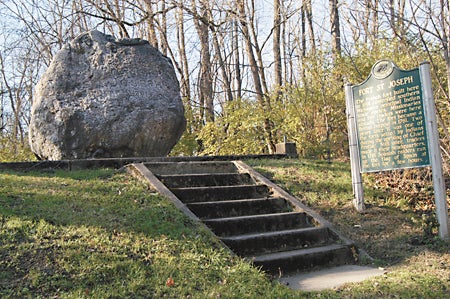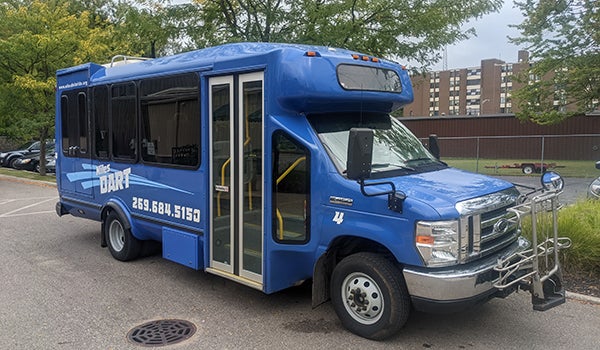Boulder rededication slated for Saturday
Published 6:32 pm Tuesday, July 2, 2013
Getting a seven-ton boulder to Fort and Bond streets to commemorate Fort St. Joseph was quite a production, so it’s fitting there will be quite a production from 2 to 4 p.m. on Saturday to commemorate its 100th anniversary at the south city limits.
Fort St. Joseph Historical Association and Support the Fort Inc. are going all out July 6 to recall the 12-by-10-by 11-foot stone’s dedication on July 4, 1913, which included a two-mile parade through town.
Everyone who owned an automobile drove in the parade.
The dedication of the Fort St. Joseph site and unveiling of the huge rock drew national attention. Chicago newspapers described the floats as outstanding.
The big rock came from the Peter Malone farm about a mile south of Niles.
In 1910, the historical society organized to mark the fort site and led community efforts to find a suitable marker, raising $1,050.
A highlight of the 1913 event was an address by Judge Orville Coolidge, author and editor of “A Twentieth Century History of Berrien County,” published in 1906.
In it, he related the almost 100-year history of Fort St. Joseph.
His speech will be re-enacted by Niles Supt. of Schools Richard Weigel portraying Judge Coolidge, who told the large gathering had these people failed, the fort of the four banners, so rich in romantic history, might have passed entirely from the memory of man.
Dr. Michael Nassaney, of Western Michigan University and director of the Fort St. Joseph archaeology project, will provide a more contemporary perspective on the fort’s history, informed by digs of the past 15 years.
Master of ceremonies will be Daily Star columnist Jack Strayer, a member of the St. Joseph Historical Association.
The story of the boulder and community efforts to move and dedicate it will be related by local historian Barbara Wood Cook, chair of the Fort St. Joseph Archaeological Advisory Council.
Those who helped pay to move the rock had their names listed on a piece of paper placed in a time capsule buried beneath.
A 1966 Daily Star article reported the sealed copper box also contained copies of this newspaper and the Daily Sun, coins, an historical primer on the fort, names of Niles lawyers, dentists, doctors, churches, ministers, as well as all postmasters since 1828, a history of the Fort St. Joseph Historical Society, fraternal societies of Niles, monument photos, industrial and commercial concerns and a list of federal, state, Berrien County and city officials of the time.
In 1966, Gertrude Johnson, director of Fort St. Joseph Museum, told the history of the big rock.
In 1910, leading citizens decided something should be done to mark the spot, so
the search began for a “suitable” rock.
One day, Beeson came across a stone in swampland on Malone’s farm on West River Road. Niles men contracted with a South Bend firm to move the boulder.
Past experience made Indiana movers wary of such jobs unless they were paid by the hour.
Two years later when the rock was dug out, its size was the talk of the area.
The South Bend firm estimated the cost at $400, but by the time the rock arrived at the fort site, the bill was $1,000. The $400 ran out when it reached the road.
Each interested man went to the bank and signed his name to a $1,000 note so movers could complete the job.
“There won’t be much left of Brandywine Creek bridge after we take the rock across it,” Ralph Ballard remarked during the move.
Lumber was borrowed from dealer Carmi Smith for men to build a span over the existing bridge.
After the stone, cradled in a huge gondola-type cart, crossed the creek, lumber that was still usable was returned to Smith.
Hillis Smith, who donated the two-headed lamb to the museum, was also an outstanding mason and built the platform.
The honor of unveiling the boulder went to Mrs. John Ferguson, president of Fort St. Joseph Historical Society.
Also taking part was Ballard, vice president of the society, and Miss Sarah Machin, society treasurer.
Scores of Niles women lent a helping hand raising money for the historical marker. School children and teachers contributed nickels.
After the ceremony, everyone trooped down the road to Beeson’s grove, where lemonade and ice cream were sold to raise the last of the money.
The public is invited to attend this free rededication.







